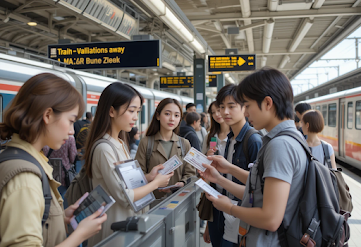The Role of Public Transport in Sustainable Tourism: Travel Greener, Explore Smarter
1. Introduction
Ever thought about how your travel choices affect the planet? Whether it’s a quick weekend trip or a big vacation, transportation plays a huge role in tourism’s environmental impact. But here’s the good news: there’s a greener way to explore—public transport.
From buses and trains to bikes and metros, public transport can make your travels more sustainable, affordable, and even more fun. Let’s talk about how choosing public transport helps you travel greener and explore smarter.
2. The Environmental Impact of Tourism Transportation
Let’s be honest: traditional tourism transportation isn’t great for the planet. Planes, cars, and cruise ships are big contributors to carbon emissions. (Here’s why: they burn a lot of fuel, which releases greenhouse gases into the air.)
Here’s a surprising fact: tourism makes up 8% of global carbon emissions, and transportation is a big part of that. Plus, too many private cars lead to traffic jams and air pollution in popular spots. (Picture this: trying to enjoy the Eiffel Tower while stuck in a sea of honking cars. Not exactly relaxing, right?)
Quick story: I once visited a coastal town where tourist cars clogged the streets so badly that locals couldn’t even get to work. It made me rethink how I travel.
3. Benefits of Public Transport for Sustainable Tourism
Why should you ditch the rental car for a bus or train? Let’s break it down:
Environmental Benefits: Public transport produces fewer emissions per passenger than private cars. Fewer cars mean cleaner air and less traffic.
Economic Benefits: It’s cheaper than renting a car or taking taxis, and it supports local economies.
Social Benefits: Public transport makes destinations more accessible for everyone, including locals and tourists.
The takeaway? Choosing public transport is good for the planet, your wallet, and the communities you visit.
4. Examples of Public Transport in Sustainable Tourism
Some places are already leading the way in sustainable tourism transportation. Here are a few examples:
Copenhagen, Denmark: Known for its bike-friendly streets and efficient metro system, Copenhagen makes it easy to explore without a car.
Switzerland: Their trains are not only on time but also powered by renewable energy. Plus, the views are amazing!
Japan: With its high-speed Shinkansen trains and extensive metro networks, Japan shows how public transport can be fast, reliable, and eco-friendly.
Fun fact: In Zurich, Switzerland, 90% of residents use public transport daily. That’s a lot of cars off the road!
5. Challenges of Implementing Public Transport in Tourism
Of course, it’s not always easy. Many places face challenges in offering sustainable public transport:
- Infrastructure: Building and maintaining public transport systems is expensive and takes time.
- Remote Areas: Rural or island destinations often lack the resources for reliable public transport.
- Tourist Behavior: Some travelers prefer the convenience of private cars, even when public options are available.
Quick story: I once visited a remote island where the only transport options were taxis or scooters. While it was fun to zip around, I wished there was a bus or bike-sharing program.
6. How Tourists Can Use Public Transport Responsibly
Ready to try public transport? Here’s how to do it like a pro:
- Plan Ahead: Use apps like Citymapper or Google Maps to figure out routes and schedules.
- Learn the Rules: In some countries, you need to validate your ticket before boarding. (My friend once got fined in Italy for forgetting to stamp her train ticket. Oops!)
- Combine Modes: Pair public transport with walking or cycling for a greener, more immersive experience.
The takeaway? A little preparation makes public transport stress-free and enjoyable.
7. Innovations in Sustainable Tourism Transportation
The future of public transport is looking bright—and green! Here are some exciting trends:
Electric Trains and Buses: These produce zero emissions and are becoming more common worldwide.
Smart Transit Systems: Real-time tracking and contactless payments make public transport more user-friendly.
Shared Mobility: Ride-sharing and carpooling apps are reducing the need for private cars.
Fun fact: Did you know some cities are testing hydrogen-powered buses? They only emit water vapor!
8. The Future of Public Transport in Sustainable Tourism
Imagine a world where every tourist destination has efficient, eco-friendly public transport. It’s not just a dream—it’s possible with the right policies, investments, and public support.
Governments and businesses need to work together to build better systems, and travelers like you can drive demand by choosing greener options. Your choices matter.
9. Conclusion
Public transport isn’t just a way to get around—it’s a way to travel responsibly and sustainably. By choosing buses, trains, or bikes, you can reduce your carbon footprint, support local communities, and enjoy a more authentic travel experience.
So, next time you plan a trip, why not leave the car behind and hop on a train or bus? As the saying goes, “The journey is the destination.” Let’s make that journey greener and smarter.
















0 Comments